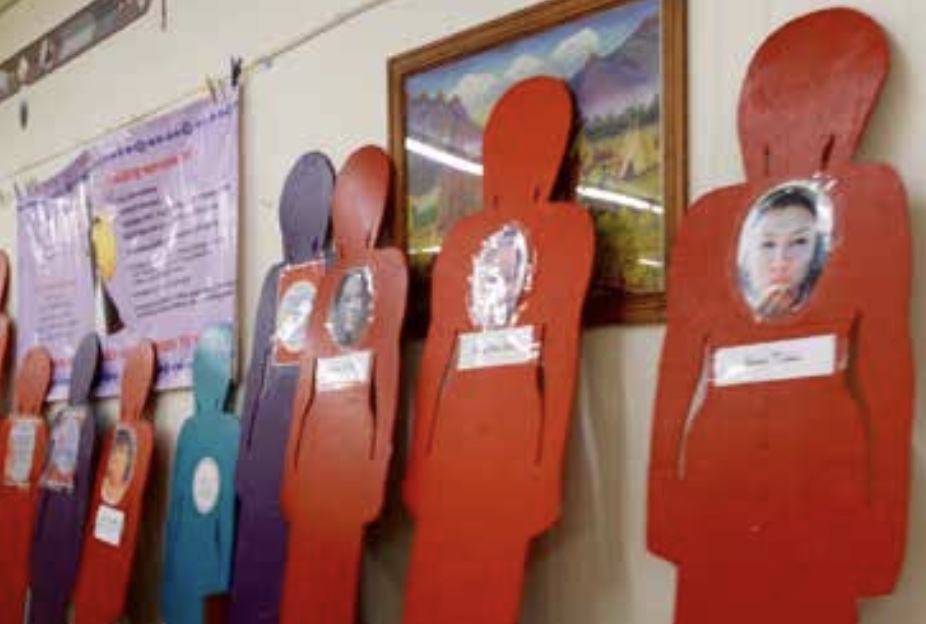Editor’s Note | Vol.15 | Issue 1
#MMIWG--Organizing to END the Crisis
“We are grieving the losses of so many,” said Mike Williams, Vice Chairman, Akiak Native Community. “When will it stop?” Families, communities, the media, elected leaders, and so many others ask, “Why is this happening?” And while each case has specific reasons as a movement, we are challenged to look deeper, to connect these cases—understand the legal infrastructure underlying this crisis and recommend the changes needed.
stop?” Families, communities, the media, elected leaders, and so many others ask, “Why is this happening?” And while each case has specific reasons as a movement, we are challenged to look deeper, to connect these cases—understand the legal infrastructure underlying this crisis and recommend the changes needed.
The “it happens in all communities not just to Native women” is unacceptable. While true, it denies the layers of federal law that prevent Indian tribes from maintaining safe communities and protecting women and girls from predators. It denies the realty that resources are not appropriated for Indian tribes to provide justice systems and respond to these crimes. These restrictions on tribal authority and denial of resources are the pillars beneath the current crisis of MMIWG. This multi-dimensional crisis is clearly linked to federal Indian law and policy.
The current system fails to respond to the disappearance and murder of Native women and girls because it was designed at a time when the goal of the United States was the termination of Indian tribes. The system is “not broken,” it never worked. It was not designed to protect Native women and girls. Native lives are dependent on a system where often the immediate response to a disappearance or murder is not action but questions—which law enforcement agency has jurisdiction to take the report, respond, conduct the search, investigate, prosecute? Even more telling of the system’s failure is the no-response mode.
Organizing to Remove the Legal Barriers to Safety
The creation of the VAWA Tribal Title in 2005 and the return of jurisdiction to Indian tribes over non-Indian perpetrators were political victories resulting from the movement organizing a groundswell demanding change. Now is the time for the movement to come
together to partner with those leaders in Congress calling for change. Every member of Congress should support the Savanna Act, the SURVIVE Act, and the declaration of May 5, 2018, as the National Day of Awareness for Missing and Murdered Native Women. Moral outrage to these cases while appropriate does little to create the changes needed to stop this violence. Concern alone is unacceptable. Organizing across Indian nations is the way to win these legislative victories and begin to remove the barriers to the safety of Native women.
Wind River brings to the public spotlight the harsh reality and heartbreak of the issues of missing and murdered Native women and girls. We thank Taylor Sheridan, the film’s writer and director, and Acacia Filmed Entertainment, an entity of the Tunica-Biloxi Indian Tribe, for this amazing contribution. Wind River opens the door for our movement to educate across Indian tribes and nationally by answering the questions posed by the film. Wind River is an organizing tool provided to the movement at a time when VAWA is due to be reauthorized. It is an opportunity we must fully maximize.
May 5, 2018, National Day of Awareness for Missing and Murdered Native Women and Girls
In 2017, the online impression for the #MMIWG reached over 8 billion nationally and internationally. As planning for May 5, 2018, is launched in your community, add a showing of Wind River to the planning for justice walks, vigils, and public awareness activities. Let us go beyond 2017 and send a message that in 2018 we call upon all members of Congress to Wear Red, to stand for justice and safety, by passing the Savanna’s Act and SURVIVE Act.





